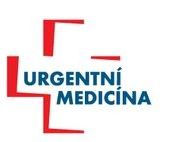INTRODUCTION
- Contents
- Editorial – Jana Šeblová
MEDICAL DEVICES
- Use of Unmanned Aerial Vehicles for Emergency Medical Services – Petr Schmidt, Jaroslav Pekara, David Peřan
PHYSIOLOGY AND EMERGENCY MEDICINE
- Stress cardiomyopathy – case reports – Marcela Bílská, Roman Škulec, Barbora Stadlerová, Tomáš Pařízek, Michal Kalina, Vladimír Černý, David Astapenko
EDUCATION
- How to pass the specialisation exam in emergency medicine? – Jana Šeblová, Katarína Veselá, Jana Kubalová
ETHICS, PSYCHOLOGY, LAW
- Multicultural nursing with focus on muslims in emergency care – Michal Kuba, Michala Ághová, Lucie Kubová
INFORMATION
- XXVII. Dostál´s days of emergency medicine 12th to 14th October 2021 – Jana Šeblová
- Abstracts from XXVII. Dostál´s days 2021
- News from the Society of Emergency and Disaster Medicine CzMA JEP
- Professor David Williams, EUSEM ex-president, died – Jana Šeblová
ABSTRACTS
USE OF UNMANNED AERIAL VEHICLES FOR EMERGENCY MEDICAL SERVICES
Petr Schmidt, Jaroslav Pekara, David Peřan
Abstract
Introduction: Unmanned Aerial Vehicles has experienced very rapid development in recent years. The aim of the study was to analyse the opinion on the use of unmanned aircraft for the emergency medical services and possibly in what activities they can be used.
Methods: The survey was conducted using semi-structured interviews. The principles of grounded theory were used for the analysis of the interviews.
Results: The analysis of the interviews identified 3 topics: (1) Experience from the integrated rescue system (IRS); (2) Perspectives on possible use – advantages and disadvantages; (3) Risks and complications associated with drones.
Conclusions: Respondents generally did not recommend the inclusion of unmanned aerial vehicles in the equipment of emergency medical services, but suggest closer cooperation within the IRS, thanks to which unmanned aircraft can be used rationally by all organisations of IRS.
Key words: Unmanned Aircraft – Drone – Integrated Rescue System – Prehospital Emergency Care – Emergency Medical Services
STRESS CARDIOMYOPATHY – CASE REPORTS
Marcela Bílská, Roman Škulec, Barbora Stadlerová, Tomáš Pařízek, Michal Kalina, Vladimír Černý, David Astapenko
Abstract
Stress cardiomyopathy (SCM) stands for a clinical syndrome in which cardiac dysfunction develops in response to psychological or physical stress. In the emergency care setting, SCM can lead to the development of hypotension, arrhythmias or acute heart failure. Its distinction from acute coronary syndrome is important. Despite the reversibility of the disease, SCM is dangerous because of the risk of developing serious complications. Treatment is predominantly supportive. Due to routine use of Point-of-Care ultrasonography in emergency medicine, an increase in the incidence of SCM can be expected. In this article, the authors present three case reports of SKM with different types of cardiac damage and summarize recommendations for practice.
Key words: stress cardiomyopathy – takotsubo cardiomyopathy – echocardiography
MULTICULTURAL NURSING WITH FOCUS ON MUSLIMS IN EMERGENCY CARE
Michal Kuba, Michala Ághová, Lucie Kubová
Abstract
The topic of the article is multicultural nursing, focused on Muslims in emergency care. The introduction of the article explains the concept of multicultural nursing. The main theoretical part focuses on the Islam as a religion and on the specifics of patients of the Muslim faith, which affect the level of emergency care. The exploratory part of the article was conducted in the form of a questionnaire survey, where we focused on knowledge and experiences of medical staff within multicultural nursing in patients of the Muslim faith. In this part we evaluated the results of 100 respondents working in the emergency department and emergency medical service. Based on the results we created educational material for medical staff.
Key words: multicultural nursing – Islam – Muslims – specifics – emergency care
